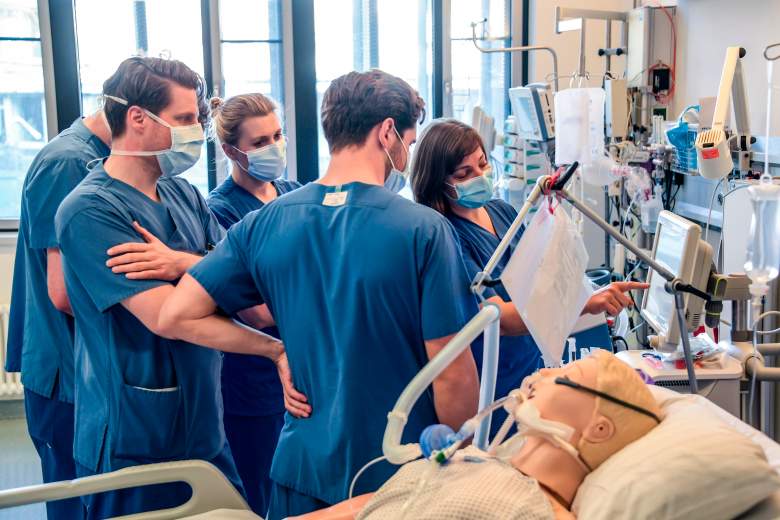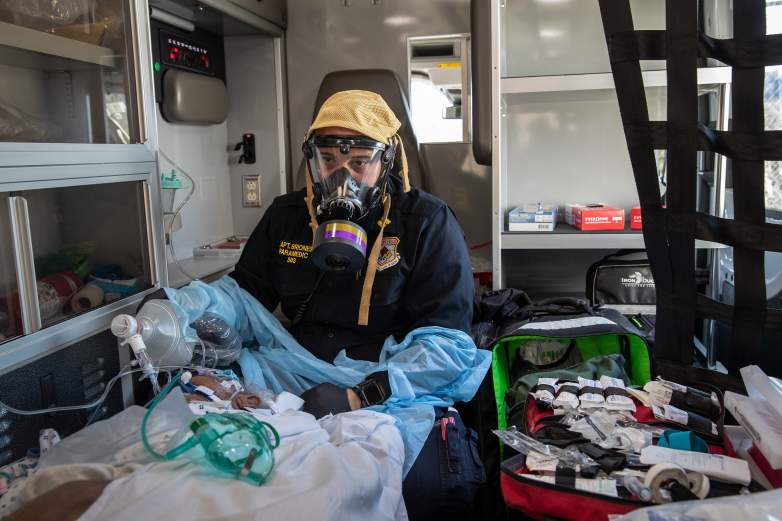
Photo by AXEL HEIMKEN/POOL/AFP via Getty Images Hospital doctors are instructed to handle a ventilator at the Universitaetsklinikum Eppendorf in Hamburg, on March 25, 2020.
In what could be a major about-face in the global battle against the coronavirus pandemic, some medical experts are starting to question the reflexive use of ventilators to treat most COVID-19 patients whose blood oxygen levels are crashing. They say emerging evidence indicates the current approach may be the complete opposite of what is needed to get the majority of patients through the worst of the disease and on their way to recovery.
COVID-19 patients often arrive at hospitals with stunningly low blood oxygen levels, numbers that suggest they should already be dead, which is why doctors rush to put them on ventilators that force more oxygen into their lungs and, hopefully, onward to their internal organs. However, now that the medical community has had a few months’ worth of experience with patients suffering from this new virus, some physicians are starting to think COVID-19 affects the body’s ability to process oxygen much differently than other more familiar kinds of respiratory diseases.
As a result, the use of ventilators might actually be counterproductive for a majority of COVID-19 patients who might be better off with just an oxygen mask or even a nasal cannula tube run underneath the nose like those that are often used by elderly patients in home settings.

Photo by John Moore/Getty ImagesEmpress EMS Captain AJ Briones, wearing a personal protective equipment respirator (PPE), cares for a suspected COVID-19 patient while in route by ambulance to St. John’s Riverside Hospital on April 06, 2020, in Yonkers, New York.
If such simple non-invasive approaches do turn out to be more effective in treating the majority of COVID-19 patients with low blood oxygen levels it would mean several things. First and foremost, it would make the nation’s increasingly thin supply of complicated high-tech ventilators available to more of those patients who really do need them.
It could also render moot the frantic effort being undertaken by medical companies who have been teaming up with automakers and other mass production industries around the world to try to crank out tens of thousands of new ventilators in a race against time.
Unfortunately, it’s a race they appear to have largely lost already, since most projections have the new ventilators starting to arrive weeks and months from now, with large numbers not expected until the end of this year. That delivery schedule contrasts starkly with medical forecast models that estimate the virus outbreak in the United States is already “peaking” in major cities this month, with those peaks expected to continue through the first 10 days of May before starting to trend down.
READ NEXT: Far-Ultraviolet Light May Kill Coronavirus Without Harming Humans
